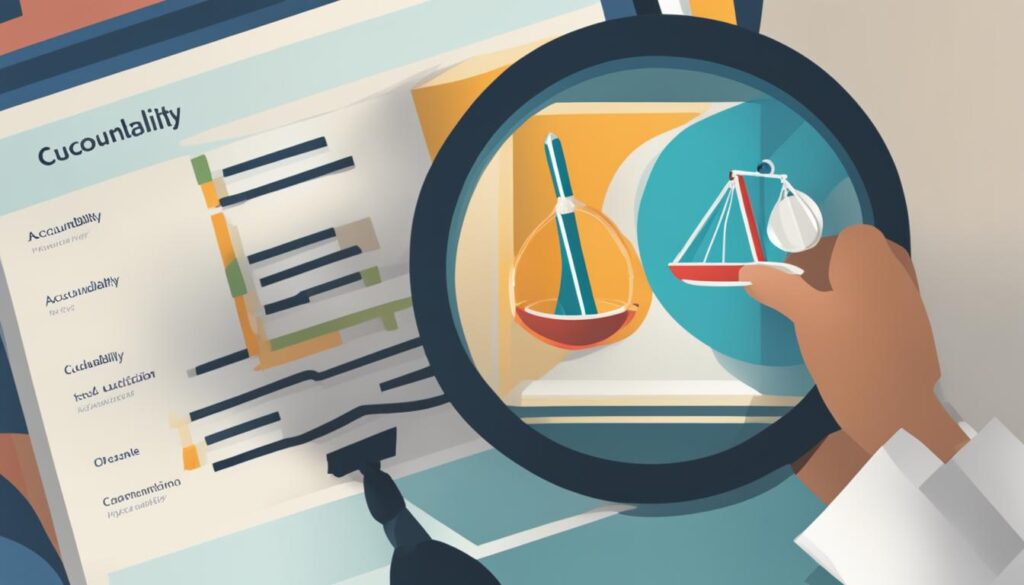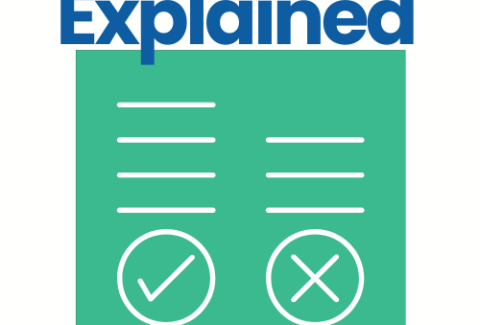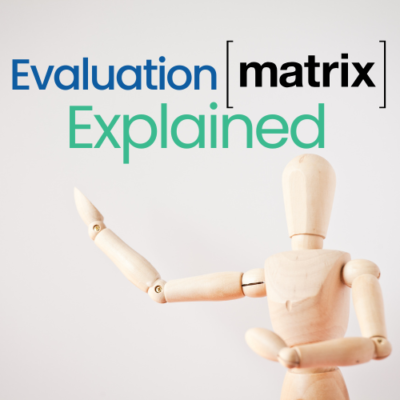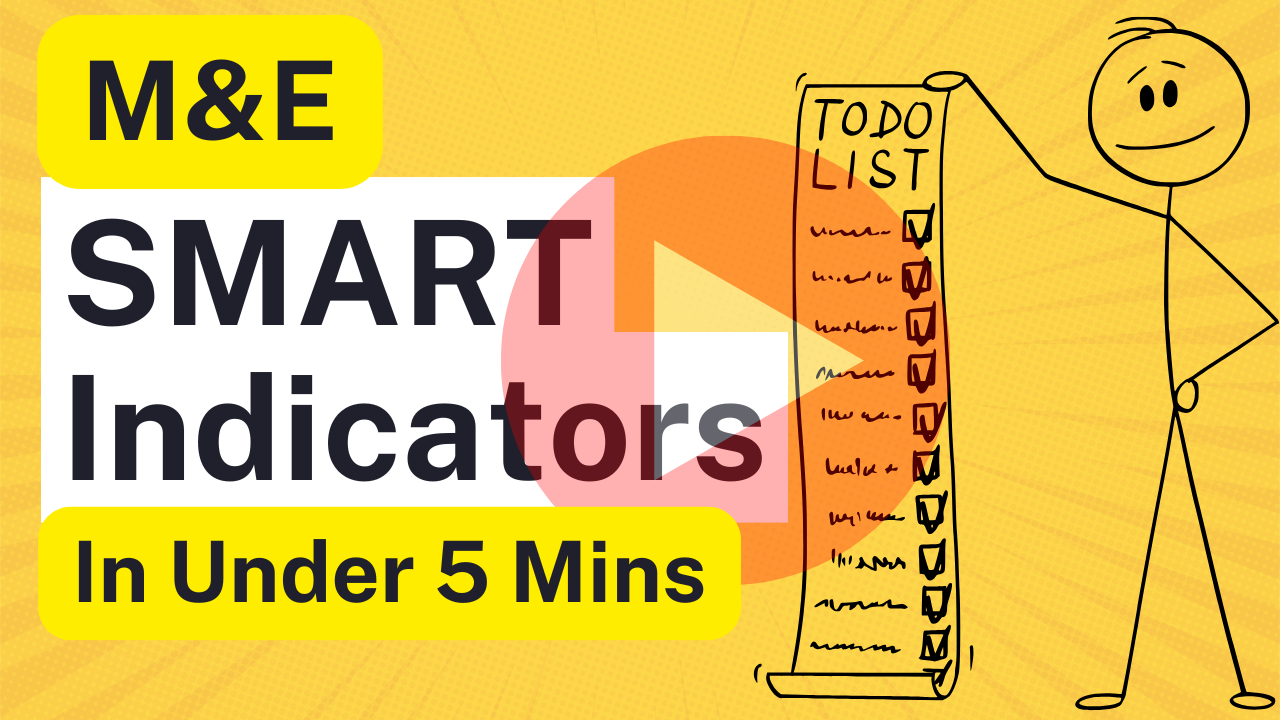CBA Techniques for M&E Activities Explained
December 20, 2023 2023-12-20 7:31CBA Techniques for M&E Activities Explained
If you work in monitoring and evaluation, you likely understand the importance of maximizing the value for money of your projects and initiatives. This is where cost-benefit analysis (CBA) techniques come in. These tools can help you assess the costs and benefits of different options, allowing you to make informed decisions that will lead to greater efficiency and better project outcomes.
In this section, we’ll explain the basics of CBA techniques and how they apply to monitoring and evaluation activities. Whether you’re new to cost-benefit analysis or simply looking to refresh your knowledge, you’ll find valuable insights here.
Key Takeaways
- Cost-benefit analysis (CBA) techniques can help you maximize the value for money of your projects and initiatives.
- By assessing the costs and benefits of different options, CBA can inform decision-making and lead to greater efficiency.
- Understanding the basics of CBA is essential for anyone working in monitoring and evaluation.
- Using CBA techniques requires a structured approach and careful consideration of all relevant factors.
- Incorporating CBA into your M&E activities can help you enhance project outcomes and ensure you’re using resources effectively.
The Importance of Decision-Making in M&E
When it comes to monitoring and evaluation, effective decision-making is essential to ensure project success. Every decision you make throughout the process has an impact on the project’s direction, progress, and outcome. That’s why it’s crucial to have a well-structured and informed decision-making process in place.
Many decision-making frameworks exist in the industry, but cost-benefit analysis (CBA) has proven to be one of the most effective techniques for sound decision-making in M&E. CBA involves analyzing the costs and benefits of an action or project, evaluating the risks and rewards, and examining the opportunity costs of choosing different options. By using this technique, you can identify the best course of action to maximize the value and efficiency of your M&E activities.
CBA is particularly important in M&E because it can help you to:
- Identify options: CBA techniques are useful for identifying different options for your activities, projects, or policies. It’s important to have a range of choices when engaging in M&E activities to ensure you have adequately considered all available options.
- Evaluate benefits and drawbacks: CBA helps you to evaluate the benefits and drawbacks of each option under consideration, enabling informed decision-making, prioritization, and resource allocation.
- Assess opportunities: By examining opportunity costs, CBA allows you to assess the potential opportunities forgone with each decision made, helping you to make informed decisions and prioritize resources effectively.
- Reduce risks: CBA helps to identify risks associated with each option, allowing you to minimize risks factors and maximize rewards.
Through employing CBA in decision-making, you can achieve more efficient and effective results, reduce risks, and ensure accountability for results. The process of applying CBA requires analysis, precise planning, and careful consideration. In the next section, we will delve into how CBA techniques can aid in decision-making and its application in M&E.
The Importance of Data in Decision-Making
Before moving on, it’s essential to note that data plays a critical role in decision-making, particularly in CBA. Accurate data informs assessments of costs, benefits, and risks, making them more precise and reliable. You should ensure the quality and reliability of data before applying CBA techniques to maximize the usefulness of this approach in M&E.
Maximizing Resources through CBA
As you know, resources are scarce, and it’s important to use them efficiently. By implementing CBA techniques, you can identify the most effective ways to allocate your resources in M&E activities. This will lead to better project outcomes and improved efficiency.
CBA helps you determine the benefit of each alternative decision in terms of resources and expenses. By doing so, you can weigh the cost versus the value of each activity and identify the ones that offer the most value for money.
A great way to improve the efficiency of your program is by using a decision matrix. This tool will help you prioritize activities based on their impact and feasibility and allocate resources accordingly. By using CBA to evaluate the alternatives, you can find the ones that offer the most value for their cost.
Maximizing Resources through CBA: Example Table
| Activity | Estimated Cost | Estimated Benefits | Cost-Benefit Ratio |
|---|---|---|---|
| M&E Report Writing | $10,000 | Provides useful information to stakeholders | 1:3 |
| Baseline Survey | $20,000 | Provides important context for project outcomes | 1:2 |
| Capacity Building for Staff | $5,000 | Improves staff performance | 1:4 |
| Performance Evaluation | $15,000 | Identifies areas of improvement and success | 1:3 |
This example table shows how CBA can identify the activities that provide the most value for their cost. In this case, Capacity Building for Staff offers the highest cost-benefit ratio, followed by M&E Report Writing, Performance Evaluation, and, lastly, Baseline Survey.
By using CBA techniques to allocate resources effectively, you can maximize the impact of your M&E activities.
Understanding Value for Money
When it comes to monitoring and evaluation activities, assessing value for money is a critical consideration. CBA techniques can help you examine the relationship between the cost of a project or initiative and the benefits it yields, allowing you to optimize the use of resources and maximize efficiency.
How do you determine the value for money of your M&E activities? CBA employs a range of methodologies that help you evaluate the outcomes, impact, costs, and benefits of your projects. By understanding the value chain of your M&E activities, you can create a detailed picture of the overall costs of your initiatives, helping you identify hidden expenses and opportunities to improve.
Moreover, CBA techniques enable you to compare the costs and benefits of different intervention options, ensuring an informed decision-making process. This way, you can allocate resources more effectively, select the most suitable initiatives, and achieve better value for money results.
To summarize, CBA techniques are instrumental in helping you assess the value for money of your M&E activities, allowing you to optimize your initiatives in a cost-effective and efficient manner.
Maximizing the Value for Money of Your M&E Activities with CBA
Here’s how CBA techniques can help you maximize the value for money of your M&E activities:
| Benefit | How CBA Can Help |
|---|---|
| Identifying cost drivers and hidden expenses | By conducting a detailed cost analysis, CBA techniques help you identify cost drivers and hidden expenses, allowing you to address them more effectively and improve the value for money of your M&E activities. |
| Comparing intervention options | CBA enables you to compare the costs and benefits of different intervention options, providing you with the necessary information to select the initiatives that will yield the most value for money. |
| Maximizing resource allocation | CBA techniques help you allocate resources more effectively, ensuring that you make the most of your resources and achieve better value for money results. |
By conducting a cost-benefit analysis, you can make informed decisions and maximize the value for money of your M&E activities.
Prioritization and Accountability with CBA
Effective prioritization and accountability are critical aspects of monitoring and evaluation (M&E). Using Cost-Benefit Analysis (CBA) techniques can help you prioritize activities and ensure accountability in decision-making processes. By utilizing CBA methodologies, you can conduct a thorough analysis to determine which activities are worth pursuing, which come with high costs, and which will benefit the program the most.
For example, you may have identified several initiatives under your M&E program that require funds. You can use CBA techniques to analyze the costs and benefits associated with each activity, and determine which initiatives are viable and bring the best return on investment. This process contributes to making effective decisions by selecting activities that will provide the greatest benefit at the lowest cost.
Accountability is an important aspect of the decision-making process in M&E activities. The use of CBA techniques promotes accountability since the analysis is non-partisan and evidence-based. CBA techniques help provide objective information that can be shared with stakeholders, leading to transparency in the decision-making process. This creates an accountability mechanism that ensures all decisions are based on a thorough analysis and understanding of resource utilization.

Table: The Benefits of Prioritization and Accountability with CBA Techniques
| Benefit | Description |
|---|---|
| Greater Efficiency | CBA techniques help identify the most feasible and effective options, leading to efficient use of resources. |
| Transparent Decision-making | CBA analysis provides a clear understanding of the costs and benefits of each activity, which promotes transparency and accountability in decision-making processes. |
| Informed Prioritization | CBA analysis helps prioritize activities based on their potential to provide the greatest benefit. |
| Objective Analysis | CBA analysis is based on evidence, which promotes objective decision-making. |
By implementing CBA techniques, you can optimize the utilization of resources and ensure that your M&E activities are aligned with program goals and objectives. The benefits associated with prioritization and accountability with CBA techniques are difficult to ignore, and the potential impact it can have on your program is immense.
Assessing Impact through CBA
Measuring the impact of your projects and initiatives is crucial to understanding their success. Impact Assessment using CBA techniques can help you evaluate the real value of your efforts and make informed decisions on how to improve and optimize them.
First, you need to identify the goals you are trying to achieve and how these align with the desired outcomes. Then, develop a framework for measuring progress towards these goals, by setting up key performance indicators (KPIs) and collecting relevant data. CBA can help you identify and value direct and indirect benefits as well as costs associated with your activities, providing a comprehensive overview and greater understanding of their impact.
To conduct an impact assessment using CBA techniques, follow these steps:
- Define the problem and proposed solution.
- Identify the different options or scenarios available for addressing the problem.
- Develop a framework for measuring progress towards goals, setting up KPIs and metrics to track.
- Compile data and evaluate direct and indirect costs and benefits of each scenario.
- Assessing the net present value and internal rate of return of each option.
- Choose the best option based on the CBA findings, and implement the proposed solution.
“Impact Assessment is critical to understanding the real value of your projects and initiatives. It provides the foundation for making informed decisions and optimizing your M&E activities.”
Gaining Stakeholder Buy-in with CBA
Stakeholder buy-in is an important factor in the success of any project, especially in M&E activities. It’s crucial to gain support and cooperation from stakeholders to ensure that projects are effectively executed and implemented. With CBA techniques, you can provide stakeholders with a comprehensive understanding of the costs and benefits associated with your M&E activities. Through this, you can increase their confidence and trust in the project, which can ultimately lead to their support and buy-in.
One effective CBA technique for gaining stakeholder buy-in is to use visual aids, such as tables and charts, to present data in an easy-to-digest format. These tools can simplify complex data, highlight key findings, and showcase the potential impact of the project on stakeholders. For instance, you can use tables to show the estimated costs and benefits of the proposed M&E activities to different stakeholder groups.
The Benefits of Visual Aids in CBA:
| Benefits | Description |
|---|---|
| Clarity | Visual aids provide a clear and concise way to present complex information, making it easier for stakeholders to understand the project’s potential benefits and drawbacks. |
| Persuasion | Visual aids can be persuasive and compelling when presenting data. They help stakeholders visualize the project’s impact and benefits, thereby increasing their support and buy-in. |
| Efficiency | Visual aids can save time and effort, as they eliminate the need to read through lengthy reports and documents. Stakeholders can quickly grasp and assess the project’s value proposition with visual aids. |
By using these techniques, you can effectively communicate the benefits of implementing M&E activities to stakeholders. This, in turn, can help you gain their buy-in and support, leading to a more successful outcome for everyone involved.
Exploring Types of Costs in CBA
When conducting a Cost-Benefit Analysis (CBA) for monitoring and evaluation (M&E) activities, it’s crucial to consider all the costs involved in the project. Here are the different types of costs that need to be taken into account during the evaluation:
| Types of Costs | Description |
|---|---|
| Direct Costs | These are the costs that occur directly from the implementation of the project, such as labor costs, material costs, etc. |
| Indirect Costs | These are costs that occur indirectly in the course of the project’s implementation, such as overhead costs, equipment maintenance costs, etc. |
| Sunk Costs | These are costs that have already been incurred and cannot be recovered, such as the costs of acquiring land for the project. |
| Opportunity Costs | These are costs that arise from the next best alternative foregone, such as if a project is chosen over an alternative project which could have yielded higher benefits. |
| Contingency Costs | These are the unexpected costs that may arise during the course of the project, such as additional funds required if the project timeline is extended. |
By considering all these types of costs in your CBA, you’ll gain a comprehensive understanding of the total costs involved in the M&E activities, enabling you to make more informed decisions about its cost-effectiveness.
Identifying Types of Benefits in CBA
In monitoring and evaluation, it’s essential to identify and assess the different types of benefits that a project or initiative can generate. Cost-Benefit Analysis (CBA) techniques help you to do just that, facilitating a more granular understanding of the advantages that M&E activities can offer.
CBA techniques enable you to break down benefits into different categories:
- Direct benefits
- Indirect benefits
- Intangible benefits
- Non-monetary benefits
Direct benefits are the quantitative and measurable gains that can be directly attributed to the implementation of a project or program.
Indirect benefits, meanwhile, are the positive outcomes that arise indirectly from the project or program. These can be challenging to identify, and the link between the project and the gains can be less clear but still significant.
Intangible benefits are the gains that are difficult to quantify, usually being values, beliefs, or attitudes that are continuously nurtured and grown.
Finally, non-monetary benefits are gains that cannot be valued in terms of monetary currency. This type of benefit is usually perceived rather than quantified, such as trust or goodwill, which is usually priceless.
Being able to identify and evaluate these different types of benefits is useful for making informed decisions about M&E activities and ensuring that resources are allocated to the right elements. CBA techniques provide a framework to achieve this outcome, enabling you to optimize the cost-benefit analysis and maximize the potential of your M&E activities.
Types of Benefits
| Direct Benefits | Quantitative and measurable gains |
|---|---|
| Indirect Benefits | Positive outcomes that arise indirectly from the project or program |
| Intangible Benefits | Values, beliefs, or attitudes that are difficult to quantify |
| Non-Monetary Benefits | Gains that cannot be valued in terms of monetary currency |
Conducting CBA for Effective Decision-Making
To effectively conduct a Cost-Benefit Analysis (CBA) for your monitoring and evaluation (M&E) activities, you need to follow a structured approach that ensures you make informed decisions, maximize resources, and measure project impact.
Here are the essential steps involved in conducting a CBA:
- Define the project scope: Clearly define the boundaries, objectives, and expected outcomes of the project. This will help you identify the costs and benefits that are relevant to your analysis.
- Identify costs and benefits: Compile all costs incurred in the project, including direct and indirect costs and any overheads. Additionally, identify all possible benefits that the project may have, including tangible and intangible benefits.
- Quantify costs and benefits: Assign values to all costs and benefits identified in step two, using methods such as market values, replacement costs, or opportunity costs. Ensure you use consistent values, such as present values, to evaluate all costs and benefits over time.
- Calculate and compare: Calculate the net benefits by subtracting total costs from total benefits. The higher the net benefits, the more favorable the project’s costs and benefits ratio.
- Assess sensitivity: Review the analysis, testing with different assumptions and scenarios, to assess the sensitivity of your analysis to variations in your inputs.
- Make a decision: Based on the outcomes of your analysis, make a decision about whether the project is economically viable or should be reconsidered, refined, or ceased.
Applying CBA techniques can help you identify the most cost-effective and beneficial projects for your organization’s goals. By facilitating data-driven decision-making, you can optimize project resource allocation, assess impact, and ensure accountability.
When conducting CBA, it’s essential to take into consideration that this method may not be appropriate for every project and may face certain limitations. Nevertheless, by following these steps, you can conduct an effective CBA that suits your organization’s needs and goals.
Challenges and Considerations in CBA
While Cost-Benefit Analysis (CBA) is a great tool for M&E activities, several challenges and considerations make its implementation difficult. By exploring these factors, you can anticipate potential roadblocks and optimize your CBA process.
CBA Implementation Challenges
The following are common challenges you may face when conducting CBA:
- Complexity – CBA can be complex, particularly when identifying and valuing intangible benefits and opportunity costs.
- Data availability – Accurate data is necessary to conduct a CBA, and may not always be readily available.
- Time and cost – Conducting a CBA takes time, effort, and resources, which may not always be feasible.
Considerations in CBA
When conducting CBA for M&E activities, the following considerations are essential:
- Discount rates – Choosing the appropriate discount rate for future costs and benefits is critical for accurate valuations.
- Comprehensive analysis – To avoid bias, it is crucial to conduct a comprehensive analysis that considers all costs and benefits, even those that may be difficult to quantify.
- Stakeholder perspectives – Understanding stakeholder perspectives and goals is crucial for accurate CBA results and gaining stakeholder buy-in.
Tip: Consult with experts or seek out training to ensure you are conducting CBA properly and avoiding common pitfalls.
Incorporating CBA techniques into your M&E activities can maximize value for money and improve decision-making. However, it’s important to acknowledge and address the challenges and considerations involved to ensure a successful process.

Conclusion
CBA techniques have proven to be invaluable in optimizing the cost and benefit analysis of M&E activities. By implementing these techniques, you can ensure a more structured approach to decision-making, resource allocation, and overall project efficiency.
While there are challenges to overcome and factors to consider, the benefits of using CBA in your M&E activities cannot be overstated. By prioritizing and maximizing your resources and evaluating the impact of your projects, you can make more informed decisions and achieve greater success.
Take the first step towards incorporating CBA into your monitoring and evaluation processes by exploring the techniques and approaches outlined in this article. With the right mindset and implementation, you can effectively leverage CBA to achieve your goals and objectives and enhance the value of your M&E activities.
FAQ
What are CBA techniques?
CBA techniques refer to the various methods and approaches used to conduct a cost-benefit analysis. These techniques help evaluate the costs and benefits of a project or initiative, enabling decision-makers to assess its economic viability and make informed choices.
How can CBA techniques benefit M&E activities?
CBA techniques can maximize the value for money and efficiency of M&E activities. By systematically analyzing costs, benefits, and impacts, these techniques enable organizations to allocate resources effectively, prioritize initiatives, and ensure accountability in decision-making processes.
Why is decision-making important in M&E?
Decision-making plays a vital role in M&E as it determines the direction and outcomes of projects and initiatives. CBA techniques provide valuable insights and evidence that inform decision-making, helping organizations make well-informed choices based on objective analysis of costs, benefits, and impact.
How can CBA help maximize resources in M&E?
CBA techniques can help identify the most effective use of resources in M&E activities. By assessing costs, benefits, and impacts, organizations can prioritize projects, allocate resources efficiently, and ensure that resources are utilized where they can generate the highest returns.
What is value for money in the context of M&E?
Value for money refers to the optimal use of resources to achieve desired outcomes and impacts. CBA techniques enable organizations to assess and optimize the value for money of their M&E activities by comparing the costs incurred with the benefits and impacts generated.
How can CBA techniques aid in prioritization and accountability?
CBA techniques provide an objective framework for prioritizing activities and ensuring accountability in decision-making processes. By systematically evaluating the costs, benefits, and impacts of different options, organizations can make informed choices based on evidence and transparently account for their decisions.
How can CBA help assess the impact of M&E activities?
CBA techniques assist in conducting impact assessments by evaluating the costs, benefits, and impacts of M&E activities. This enables organizations to measure and understand the effectiveness and outcomes of their projects, facilitating evidence-based decision-making and continuous improvement.
How does CBA contribute to gaining stakeholder buy-in?
CBA techniques help organizations gain stakeholder buy-in by providing evidence-based analysis and transparent decision-making processes. Stakeholders are more likely to support and cooperate when they can see the economic rationale behind the projects and initiatives and understand the expected benefits they will receive.
What are the types of costs considered in CBA?
CBA considers various types of costs, including the initial investment costs, ongoing operational costs, maintenance and repair costs, and any potential costs associated with risks and uncertainties. It is important to consider all relevant cost elements to gain a comprehensive understanding of the economic implications.
What types of benefits can be identified in CBA?
CBA techniques help identify and assess various types of benefits in M&E activities. These include direct financial benefits, such as cost savings or revenue generation, as well as indirect benefits, such as improved quality of life, environmental sustainability, and social advantages.
How do you conduct a CBA for effective decision-making?
Conducting a CBA involves a structured approach that includes identifying costs and benefits, quantifying them where possible, assessing impacts, conducting sensitivity analysis, and comparing alternative options. The results of the analysis can then inform and facilitate effective decision-making in M&E activities.
What are the challenges and considerations in using CBA?
While CBA techniques offer valuable insights, there are challenges to keep in mind. These can include data limitations, uncertainties surrounding future costs and benefits, difficulties in accurately quantifying non-monetary impacts, and accounting for the distributional effects of projects. It is important to carefully consider these challenges and adjust the analysis accordingly.












